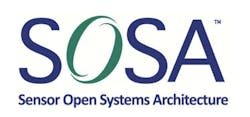11 Myths About SOSA OpenVPX Chassis Platforms
Is SOSA (Sensor Open Standard Architecture) is a big deal? SOSA looks to streamline the design and acquisition of technology for the three branches of the armed services of the United States. This also impacts a range of related areas from avionics to defense forces in other countries.
So on to our 11 Myths about this new standard and how it affects the delivery platform: the backplane and chassis.
1. SOSA (Sensor Open Standard Architecture) really isn’t a big deal.
By reaction of those at the Tri-Service Open Architecture Interoperability Demonstration and those in the industry, there’s a great deal of excitement and anticipation for SOSA. One of the most significant factors is the three branches of service will finally be aligned in a common, modular open standard architecture centered around OpenVPX.
2. SOSA will replace OpenVPX, HOST (Hardware Open System Technologies), CMOSS (C4ISR/EW Modular Open Suite of Standards), and FACE (Future Airborne Capability Environment).
SOSA is meant to leverage and align the efforts, not replace them.
3. SOSA will add significant complexity to OpenVPX enclosures.
It’s better to think of SOSA as leveraging and enhancing existing VITA standards. From a mechanical enclosure standpoint, the amount of required changes from an OpenVPX chassis can range from none at all to very limited, depending on the chassis capabilities.
4. Cooling is an area where SOSA will demand major changes for the OpenVPX chassis platform.
The chassis for SOSA-based systems will have to dissipate lots of heat, but that trend is nothing new in OpenVPX systems. One of the cooling initiatives for these types of systems is for each plug-in module to act as its own conduction-cooled enclosure, with airflow from the chassis pushing or pulling air across the module fins—similar to a heat-exchanged ATR (Air Transport Rack) system. The modifications to optimize this approach from an OpenVPX chassis standpoint can be minimal.
5. Your OpenVPX/VITA 65 module and backplane profiles won’t be useful going forward.
SOSA will leverage current backplane profiles in VITA 65 and the interfaces in VITA 66 for optical and VITA 67 for RF. There are new timing signal options, such as radial clocks across the backplane, and power changes that can affect designs, but the updates are meant to avoid forklift upgrades.
6. The power for OpenVPX will be basically the same in SOSA-based systems.
This is where there’s a significant change. The power will be simplified to utilize only 12 V with 3.3 AUX and VBAT. Currently, 3U OpenVPX can utilize 3.3 V, 5 V, +12 V, −12 V, 3.3 AUX, and 12-V AUX. Incorporating all of these rails into various types of power supplies has been a challenge in the industry and can be costly. The simpler power configuration should help improve interoperability in the system and require less investment in countless configurations.
7. System management is an expensive option.
Wrong on two fronts. First, VITA 46.11 system management is already an option in OpenVPX chassis platforms. A chassis manager can be designed to plug into the P0 connector of any 3U or 6U slot, or be fixed elsewhere in the enclosure. Even the Tier 2 versions aren’t expensive. To meet the emerging standards’ goals, system management is geared to be a requirement, not just an option.
8. Without being a SOSA Open Group member, you won’t be able to make products that will be interoperable.
Profiles are already making their way into the VITA specifications, so VITA members will be able to make interoperable products. However, they may not go through the compliance testing to be termed “SOSA aligned.” That said, there are always significant benefits to membership in open standard groups.
9. All North American and European Countries can be SOSA Open Group members.
Only U.S. citizens in a U.S.-based company or subsidiary can participate. For example, even though Pixus Technologies is ITAR registered, as a Canadian company that group/location can’t participate. However, by incorporating a new subsidiary in the U.S. in the coming weeks, Pixus and our U.S. members will be able to contribute with membership.
10. SOSA-compliant chassis are on the market today.
The current terminology for meeting what’s currently outlined in the early efforts is called “SOSA-aligned,” but the specification isn’t yet ratified. As for products, there has only been a plug-fest with various capability demonstrations. For backplanes and chassis, many of the existing OpenVPX profiles with VITA 66 for optical and/or VITA 67 for RF signals in various configurations will help prime contractors and integrators begin their development.
11. SOSA will require very inflexible designs that limit options and differentiation.
Although the number of SOSA profiles will likely be managed to retain simplicity and interoperability, there will still be plenty of differentiation for chassis platform (and other) vendors to showcase their talents. This may include cooling conventions, backplane designs, and dozens of other factors. It remains to be seen if defense programs will require strict adherence to SOSA’s various required conventions, as long as the major goals of interoperability and commonality among backplane and module profiles remains intact.
Justin Moll is the Vice President of Sales & Marketing for Pixus Technologies.

